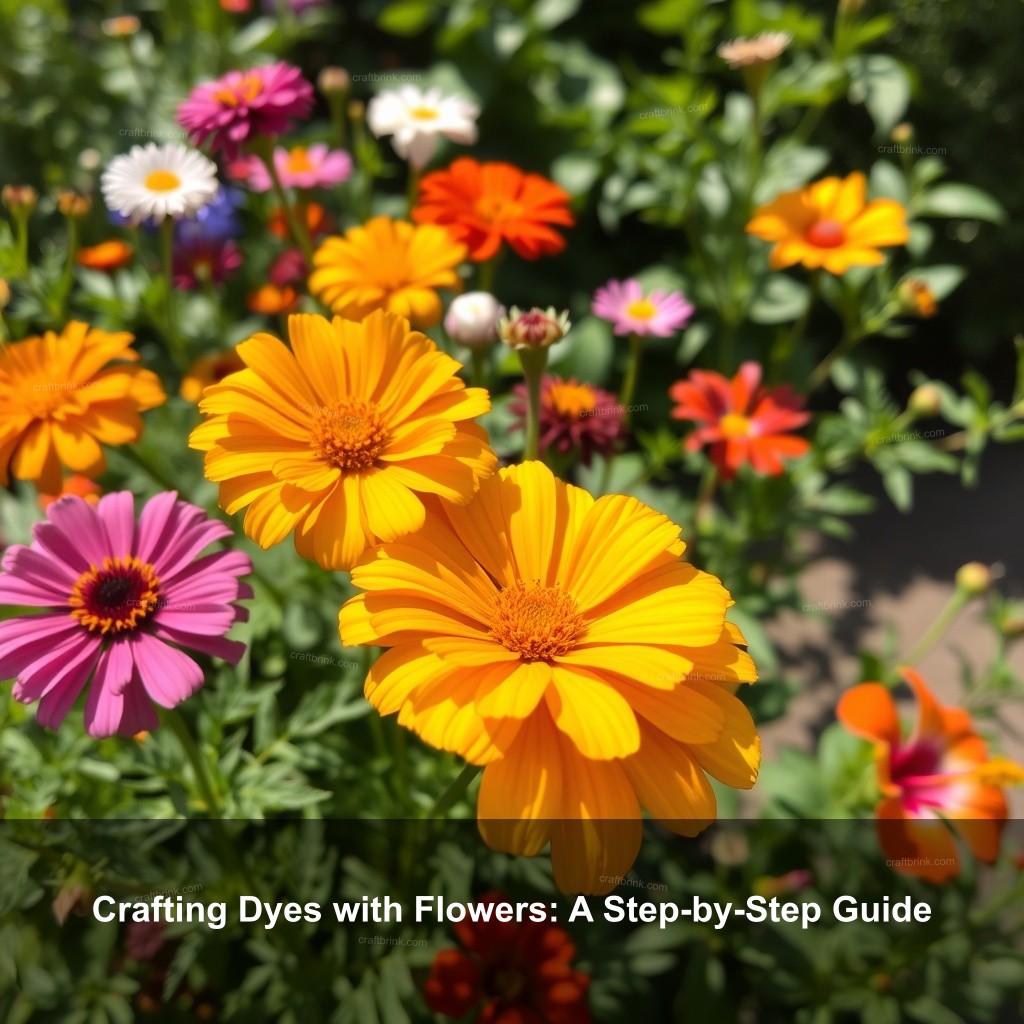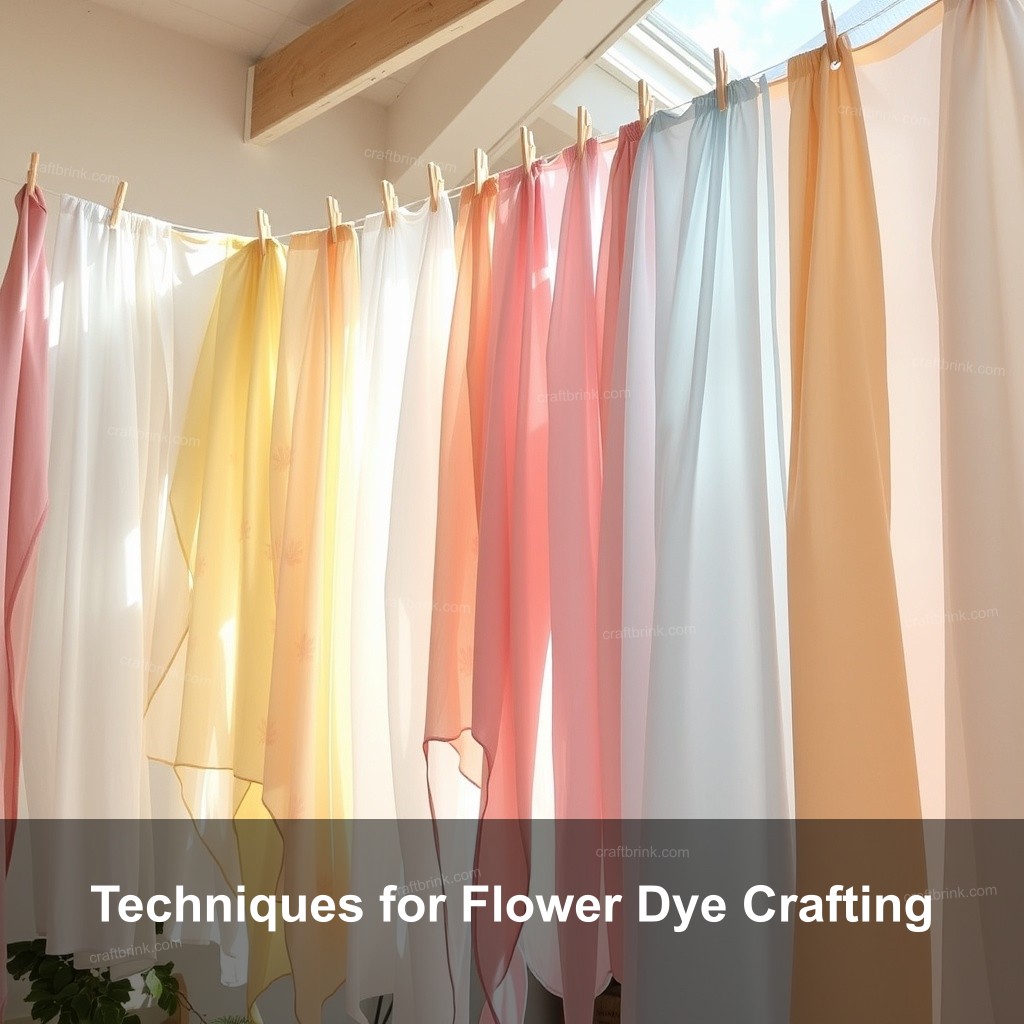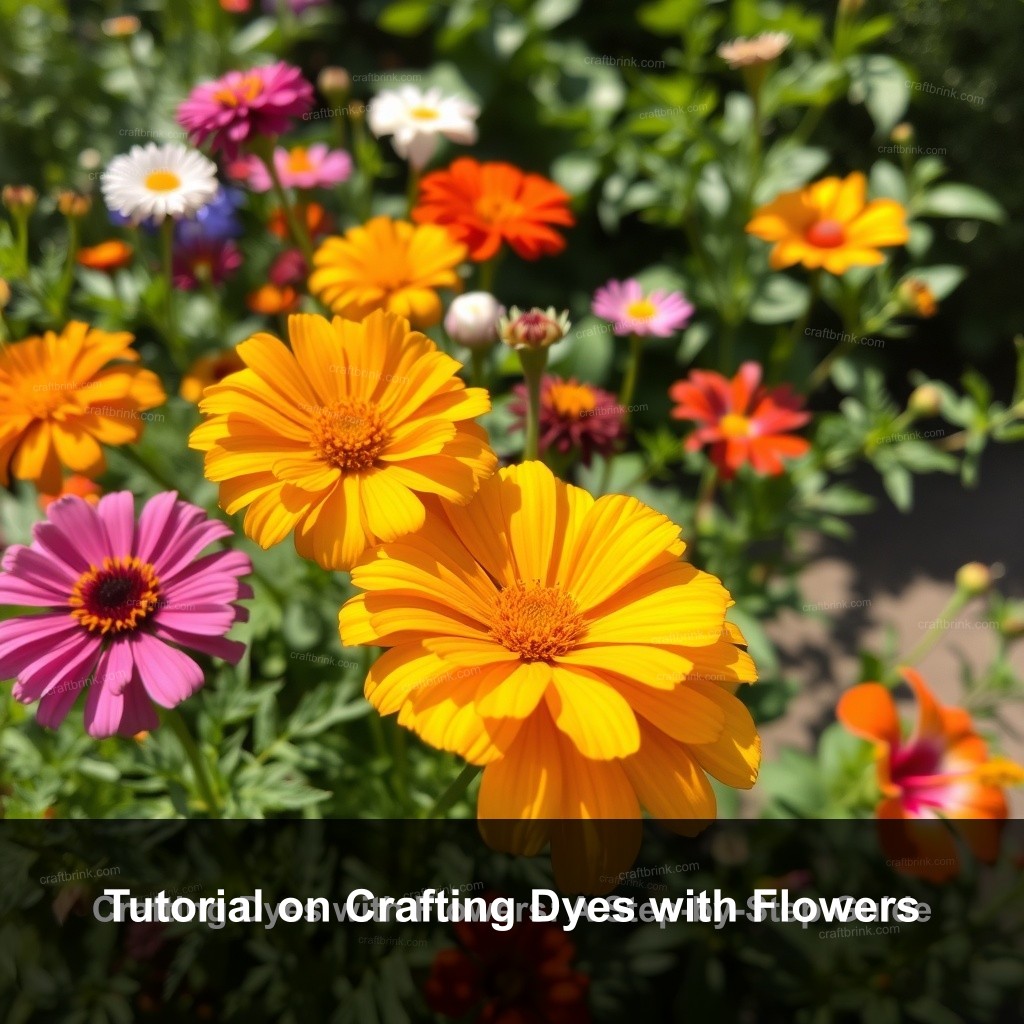Have you ever looked at the beautiful blooms in your garden and wondered if you could use their colors for crafting? At CraftBrink, we believe that flowers can do much more than just brighten your space—they can also provide lovely dyes for your fabric projects. In this tutorial, we’ll cover how to craft dyes with flowers, offering flower dye recipes and unique methods to tap into the colorful potential of nature. By the end, you’ll be ready to create your own stunning, natural fabrics.

Crafting Dyes with Flowers: A Step-by-Step Guide
When it comes to crafting dyes with flowers, knowing what natural dyes are is key. Natural dyes come from plants, insects, and minerals, offering a rich palette of colors without the harmful chemicals found in synthetic dyes. Not only are they eco-friendly, but they also provide a unique softness to the colors, making each creation special.
| Flower | Color Produced | Best Fabric Types |
|---|---|---|
| Marigolds | Bright Yellow | Cotton, Linen |
| Yarrow | Soft Green | Cotton, Silk |
| Hibiscus | Deep Red | Cotton, Wool |
| Onion Skins | Golden/Brown | Cotton, Linen |
Did you know that the color produced can change significantly based on the flower type and fabric used? For example, marigolds give a bright yellow dye, while yarrow can produce a softer green. Additionally, conditions like pH levels and the age of the plant material can influence the final color, making this process both a science and an art.
Best Flower Dye Recipes
Now, let’s get to the fun part—creating your own flower dye! Here are some easy flower dye recipes to try at home. They require minimal materials, making them perfect for beginners.
- Marigold Dye: Gather fresh marigold petals and simmer them in water for about 30 minutes. Strain the liquid and use it to dye natural fabrics like cotton or linen.
- Onion Skin Dye: Use the outer skins of yellow onions. Boil them in water for 20 minutes to extract a rich golden dye. This is one of the easiest dye recipes you can try.
- Yarrow Dye: Steep fresh yarrow flowers in hot water overnight. The next day, strain and use the resulting liquid to dye fabrics a lovely green.
For more ideas on crafting with flowers, check out our article on crafting with flowers.

Techniques for Flower Dye Crafting
In addition to knowing which flowers to use, mastering the techniques is important for achieving great results. There are various methods to apply dyes to fabrics, and understanding them can greatly affect your outcomes.
Basic Dyeing Techniques
The two main methods of dyeing fabric with flowers are immersion dyeing and bundle dyeing. Immersion dyeing involves soaking your fabric in a dye bath, while bundle dyeing uses the flowers directly on the fabric, often creating stunning prints.
- Immersion Dyeing: If you use the immersion method with marigold dye, make sure to pre-soak your fabric in vinegar water. This helps the fabric absorb the dye better.
- Bundle Dyeing: For this method, lay flowers directly on the fabric and roll them up tightly. The pressure will help transfer the dye and create beautiful patterns.
For instance, if you decide to use the immersion method with your marigold dye, submerge the fabric and let it soak according to the desired color intensity. The longer you soak, the deeper the color will be.
Advanced Dyeing Techniques
Want to take your dyeing skills further? Experimenting with modifiers can produce unexpected results. For example, adding iron or vinegar can change the dye’s hue, allowing you to create a wider range of colors. This technique is particularly useful when working with fabrics that may not absorb dye as effectively.
- Color Modifiers: Adding items like lemon juice or vinegar can adjust the final color of your dye.
- Ombre Effects: To create a fading color effect, dip one end of the fabric into the dye for a few minutes and then gradually submerge more of the fabric for a deeper color.
Consider trying different fabric types. Cotton gives you a different look than silk, and knowing how each type interacts with the dye will help you achieve your desired outcome.
Tips for Successful Flower Dyeing
To help ensure your dyeing adventures are successful, here are some must-remember tips.
Preparation and Safety
Before jumping into dyeing, proper prep is key. Clean your flowers to remove any dirt or insects. This small step can prevent unwanted surprises in your final project.
- Wash Flowers: Rinse your flowers lightly to remove dirt or bugs.
- Safety Gear: Always wear gloves when handling dyes and consider a mask if you are sensitive to strong smells.
If you’re dyeing fabric, be sure to protect your work area, as natural dyes can stain surfaces.
Troubleshooting Common Dyeing Issues
Even experienced crafters can face challenges with natural dyes. If your colors don’t turn out as expected, consider adjusting factors like soaking time and temperature. A quick test swatch can save you from larger disappointments.
- Color Intensity: If the color is too light, try soaking for a longer period.
- Preventing Fabric Damage: Use old pots and utensils when dyeing.
Another common issue is color fading. To prevent this, rinse your dyed fabric in cold water until it runs clear and avoid exposing it to direct sunlight for long periods.
Interested in more flower garden ideas? Check out our guide on flower garden ideas!
FAQs
What types of flowers can I use for dyeing?
Many flowers can be used for dyeing, including marigolds, yarrow, and hibiscus. Each flower offers different colors and properties, so feel free to try different ones!
How do I make sure my dye is colorfast?
To help make your dye colorfast, pre-mordant your fabric with a vinegar solution and rinse thoroughly after dyeing.
Can I use flowers from my garden?
Absolutely! Just make sure they are pesticide-free. Using your own flowers can yield unique and personal results.
What fabric types work best for natural dyeing?
Natural fibers like cotton, linen, and silk absorb dye best. Synthetic fabrics may not hold the dye as effectively.
Can I mix different flower dyes?
Yes! Mixing different flower dyes can create beautiful custom colors. Just be cautious about how the colors might interact with each other.
Conclusion
Crafting dyes with flowers allows you to transform your fabric projects into colorful expressions of creativity. With the recipes, techniques, and tips shared here, you’re well on your way to becoming a flower dyeing expert! We hope you enjoyed this guide, and we encourage you to share your experiences with us. Visit CraftBrink for more crafting inspiration and ideas!
